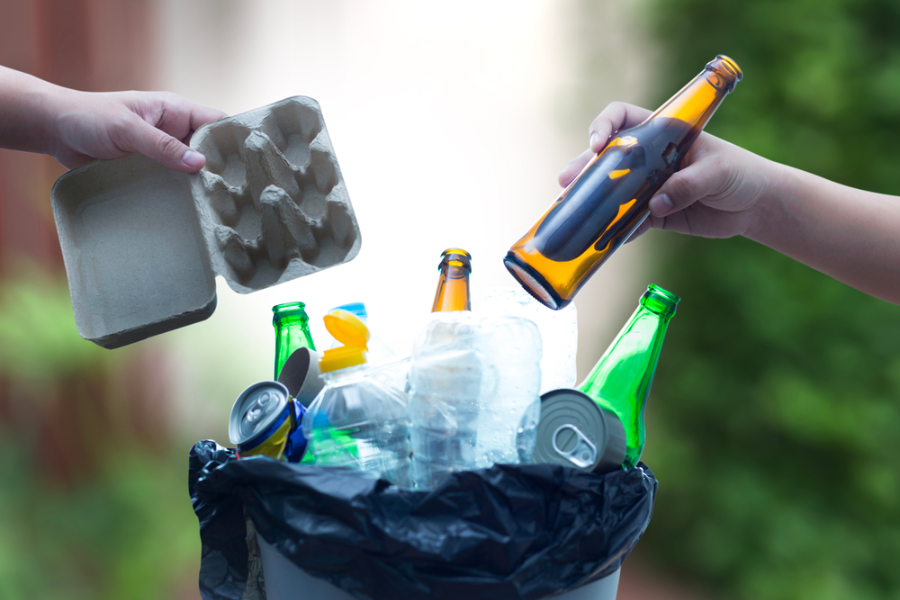Plastic World
November 7, 2017
Plastics are ubiquitous; this fact cannot be denied. Many plastics are needed to support our happy modern day lifestyles. But where do we draw the line on our ever-growing production of plastics; and even more importantly, the ever-increasing environmental impacts of plastic materials?
According to the nonprofit Plastic Oceans, the world produces almost 300 million tons of plastic each year. Adding to the environmental burden, fully one-half of the plastics produced are for single use.
For years, the growing Chinese economy provided a reliable market for recycled plastics and other materials. However, in large part because of changes in domestic recycling practices, U.S. exports to China (and other countries) of “recyclable material” increasingly contained dirty and poorly sorted materials, or even materials contaminated with hazardous substances such as lead or mercury. In 2013, China went on the offensive to clean up these imports with its “Operation Green Fence.”
This past July, China notified the World Trade Organization (WTO) of its intention to ban 24 types of solid waste imports, most notably plastics, paper, and textiles. Considering that $5.6 billion in scrap commodities were exported from the United States to China in 2016, one can imagine how the impact on the recycling industry could seem unsurmountable. Just last year, almost a quarter of our country’s largest exporters (by volume) were recyclers of paper, plastic, or metal.
Municipalities and processors are now scrambling to find markets for collected plastics. Many are finding that they will receive no revenue; indeed, they may even have to pay to get rid of materials. Communities are scaling their collection back to accepting only #1 PET or #2 HDPE bottles and containers. Markets for plastic bags and other film plastic, as well as rigid plastics like plastic lids, bins, or crates, and mixed plastics (a category that includes plastic cups and a range of food containers) are particularly constrained.
North America has processing capacity for clean, sorted streams of PET and HDPE bottles, and even polypropylene resins. For films and non-bottle rigids, China’s ban presents more of an issue. End markets for these materials have depended on exports as there isn’t enough domestic processing capacity. The limitation of North American processing capacity is, however, only one facet of the plastic issue.
Exporting our plastics to China allowed us to put a false happy face…a “plastic facade”, if you will, on our overuse of this valuable resource. While our industry voices its opposition to China’s ban, we are all nonetheless culpable for the current situation. We are all responsible for polluted communities in China and other countries that have imported the packaging and remnants of our consumer culture.
I recently viewed “Plastic China,” a movingly poignant film that puts a real face on the people processing so much of our plastic scrap. When the film was made in 2016, China was the world’s biggest plastic waste importer, receiving ten million tons of recycled material per year. Much of this material was processed at small, “plastic waste household-recycling workshops.”
The impact on the local environment, as well as the health of workers and their families that live with them, is staggering. Yes, some of these materials were recycled into new clothing, toys, or other items to satiate consumer habits around the world. Much of this plastic, however, cannot be reprocessed and lives on, polluting the environment and communities surrounding these recycling shops.
Should China be doing more to protect its environment? Yes, of course. Should China be doing more to raise its people out of the cycle of poverty? Yes. However, we as a nation need to also examine the role we have in exporting waste around the world.
As an ever changing, global nation, each of us has a role to play in keeping all of the world’s environments healthy. Our role in exporting unsorted, dirty materials to China and other nations has now come back to haunt us. The fact that we ignored the realities of how our materials were being processed by adults and children in environmentally devastating circumstances is what should truly be haunting us.
The global flow of recycled scrap plastic, which ends up in mountains of burning piles and contaminated waterways, is an image we don’t want to face.
The more than 8 million tons of plastic that ends up in our oceans every year is another image that troubles some, but hasn’t made a dent in our global production and use of plastics.
We are all responsible for a world which consumes more than one million bags every minute, and the 101 billion plastic beverage bottles sold in just one year in the U.S.
We are all responsible for embracing single-stream recycling without a vetted plan to ensure clean loads of recyclable materials that can be used in the manufacture of new products. We accept government agencies trying to save money by eliminating recycling positions, and thus failing to provide the consumer education needed to clean up the materials destined for processing.
Plastic is a valuable resource, one that needs to be used responsibly and with greater consciousness.
By Athena Lee Bradley
Share Post





